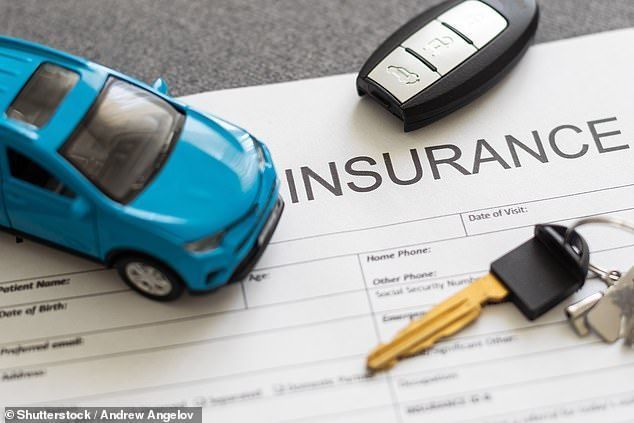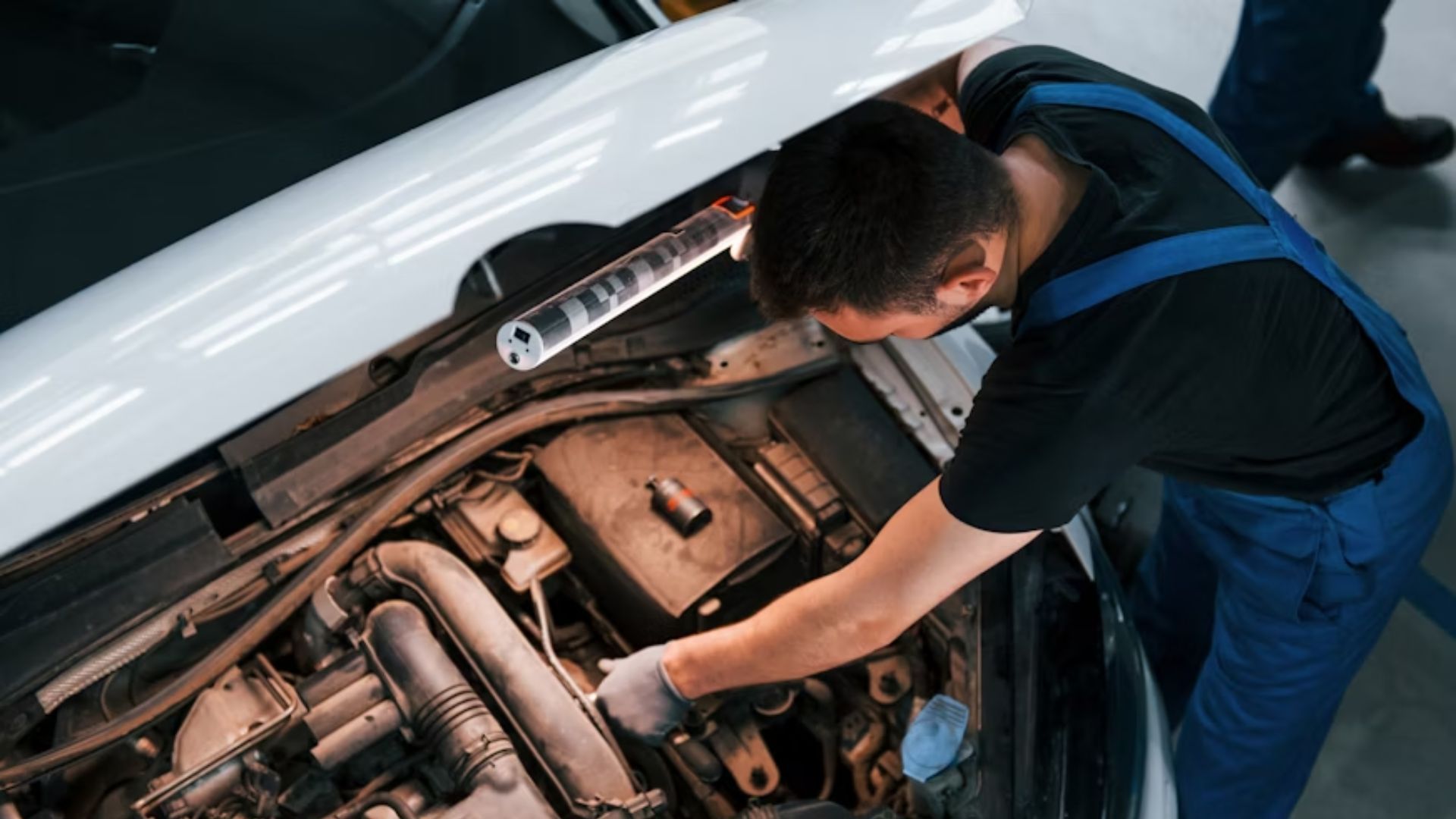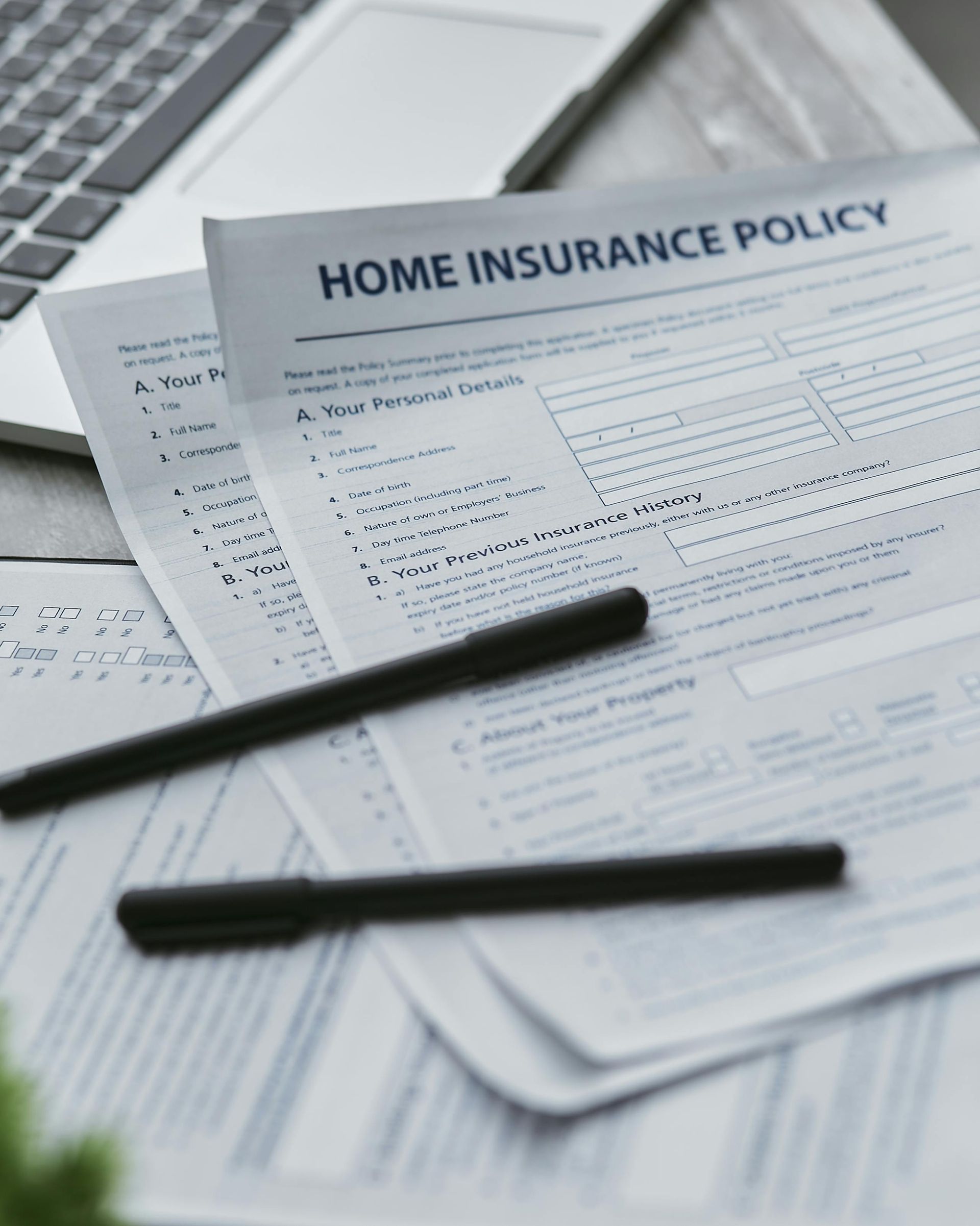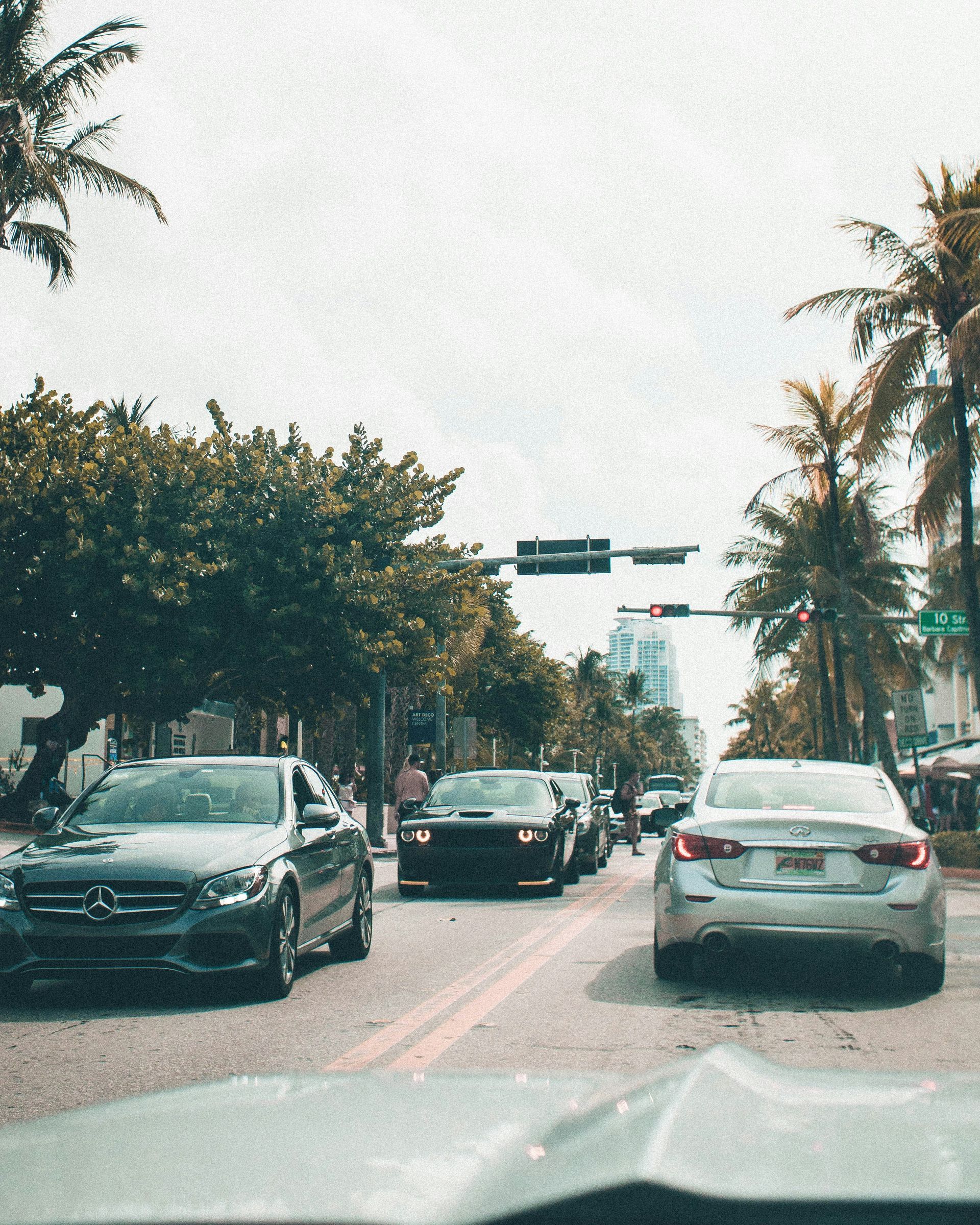Find Cheap Liability Car Insurance: Top Options for 2025
Discover top options for cheap liability car insurance in 2025. Compare rates and find the best coverage for your budget. Read more on our blog!
Key Highlights
- Liability-only car insurance costs an average of $61 per month, but your rate will depend on your unique driver profile.
- This affordable coverage satisfies the legal driving requirements in most states, covering injuries and damages you cause to others.
- Your driving record, age, location, and credit score significantly impact your car insurance premiums.
- Top insurance providers like GEICO, USAA, and State Farm consistently offer some of the most competitive rates for a basic auto insurance policy.
- Comparing quotes from multiple companies is the most effective way to secure cheap liability car insurance.
Introduction
Finding the right auto insurance does not have to be hard. You may feel lost at first, but it is simple when you know what to look for. If you want to save money on your car insurance and still meet the law, then liability coverage could be the right choice for you.
This insurance policy is the most basic plan you can get, and it is also the one many choose for a good price. It can help keep you and your car covered while you are driving.
This guide will help you learn all about finding cheap liability car insurance in 2025. You will see what it covers, and learn how to look at the top providers. This way, you can find the right auto insurance for your needs.
Understanding Liability Car Insurance for 2025
Liability car insurance is the base of any auto insurance policy. Most states need you to have it. The main point of liability insurance is to give you financial protection. If you cause an accident and someone gets hurt or their property is damaged, this insurance helps.
You can meet your legal and money needs with this basic coverage, and it does not cost too much.
Before you pick an auto insurance policy, you should learn about the coverage types and how things work. We will look at what a liability insurance policy covers. We will also go over how insurance providers set up these important protections.
What Is Liability Car Insurance?

Liability insurance is a kind of car insurance that helps pay the other person's costs after a car accident if it turns out you are to blame. It is also the minimum coverage you need to have to drive a car legally in almost every state. This insurance protects you, so you do not have to use your own money to pay for damages you cause.
This insurance policy does not help with your own injuries or fix your own car. What it does, is cover bills for repairs to the other person's car or pay their medical bills. If you do not have liability insurance, you would have to pay these costs yourself, which can end up costing a lot.
When you think of a liability insurance policy, picture it as a safety net for your money and things you own. The insurance steps in for covered car accident claims, up to a set limit, so you get peace of mind while driving.
How Does Liability Car Insurance Work?
When you cause a crash in fault states, your liability auto insurance helps pay the other person's costs. The coverage has two main parts. The first is bodily injury liability and the second is property damage liability.
If someone gets hurt in the accident, your bodily injury liability covers their medical bills and other costs tied to their injury. If you break someone's car or things like a fence or a building, your property damage liability pays to fix or replace them.
Your insurance policy will only pay covered costs up to the limits you pick. For example, if you chose a $50,000 bodily injury liability limit, but the medical expenses are $60,000, you would need to pay the extra $10,000 yourself.
This is why it is important to choose the right limits for your insurance policy. The limits decide how much your auto insurance covers and helps keep you from paying a lot of money out of your own pocket.
State Requirements for Liability-Only Coverage

Each state has its own rules when it comes to auto insurance. Most states say you need to have at least some liability coverage. These rules help make sure drivers can pay for an accident that is their fault. If you do not follow these rules, you could face fines, lose your license, or get other penalties.
Liability-only auto insurance covers the smallest amount allowed by law. But the coverage limits are not the same in every state. Let us look at what these minimums are. We can also see if they give you enough protection.
Minimum Liability Coverage by State
The minimum liability coverage you need is determined by your state's laws. These limits are often expressed as three numbers, such as 25/50/10. This format represents $25,000 for bodily injury per person, $50,000 for bodily injury per accident, and $10,000 for property damage per accident. For example, states like North Carolina and New Jersey have specific minimums that drivers must follow.
In contrast, other states have different requirements. For instance, New York demands higher liability limits along with personal injury protection. The amount of minimum coverage you must carry directly influences your insurance premium. States with lower requirements often have cheaper average rates.
Here is a common structure for liability limits:
| Coverage Type | Per Person Limit | Per Accident Limit |
|---|---|---|
| Bodily Injury Liability | $25,000 | $50,000 |
| Property Damage Liability | N/A | $25,000 |
Is Liability-Only Insurance Enough to Meet Legal Requirements?
Yes, buying a liability-only car insurance policy will be enough to meet the law in most states. If your coverage limits match or go over your state's minimums, you can drive your car without worry about breaking the law. That is why many drivers pick liability-only insurance, as it is cheaper and keeps you legal.
But, having the minimum coverage does not mean you will always have enough financial help. Some states need more than just basic coverage. For instance, North Dakota asks drivers to have personal injury protection (PIP) or uninsured motorist coverage along with their liability car insurance policy.
You should keep in mind, though, that minimum coverage does not give much financial protection. If you have a big car accident, you might have to pay the costs that go over your insurance policy. This means you could end up having to use your own money to cover what your insurance did not pay.
What Liability Car Insurance Covers (and What It Doesn’t)
Knowing what your insurance policy covers is very important. It makes sure you get the right protection you need. Liability car insurance is made to pay for costs that other people have if you are at fault in a car accident. This insurance has two main parts: bodily injury liability and property damage liability.
These two parts help pay for the other driver's medical payments and their car repairs, in case you cause an accident. But, you should also know what your insurance does not cover. With car insurance, it helps to find out what is included and what is not included in your policy. This way, you, and the people around you, can be ready for anything that comes up.
Bodily Injury Liability Explained
Bodily injury liability is an important part of your car insurance policy. It helps if you hurt someone in a car accident. This coverage pays for their medical bills, like hospital stays, medicine, and rehab. If you do not have this, you may have to pay thousands of dollars in medical expenses on your own.
Besides medical bills, bodily injury liability can also help pay if they miss work and lose wages. If things get worse and the injury claims lead to a lawsuit, your insurance can cover legal fees too. This protects you from high costs when someone else is hurt in a car accident.
The amount your insurance company will pay depends on your coverage limits. It is smart to set coverage limits that will protect your money and assets if a big accident happens. If the costs go over these limits, you will need to pay the extra amount yourself.
What’s Not Covered Under Liability-Only Policies
While liability insurance is important, it does not take care of everything. This type of insurance will not pay your own costs after you are to blame in an accident. If your car gets hurt in a crash, you have to pay for those repairs. It also does not help with your medical bills if you get hurt.
To guard yourself and your car, you have to get extra plans with your policy. These are usually joined together and called a "full coverage" policy.

Here are some key things not paid by liability-only insurance:
- Your vehicle repairs: Collision insurance will pay to fix your car if it is hurt in a crash.
- Theft or non-accident damage: If your car is taken by someone or if something like bad weather or vandals hurt your car, comprehensive coverage takes care of it.
- Your medical expenses: Your medical payments or personal injury protection plans pay for your own injuries.
- Accidents with uninsured drivers: When someone hits you and they do not have insurance, uninsured motorist coverage helps pay your expenses.
Comparing Liability-Only vs Full Coverage
When you buy car insurance, you need to choose between a liability-only policy or full coverage. Liability covers damage that you cause to others. Full coverage will protect your own car, too. The best option for you will depend on the value of your car. It also depends on your budget and how much risk you want to take with your money.
It’s important to know how these coverage types work. They will change how much you pay for your insurance premiums. Let's look at what sets these choices apart, so you can pick what’s good for you.
Key Differences Between Liability and Full Coverage
The main difference between a liability-only car insurance policy and full coverage is who and what gets help if there is an accident. A liability insurance policy is one-sided. This type pays for the other person's injuries and their property damage when you are at fault, but your own costs are not covered. On the other hand, full coverage will protect you and the other person.
Full coverage is not just one insurance policy. It is a mix of three coverages: liability insurance, collision coverage, and comprehensive coverage. Collision coverage pays to fix or replace your car if it gets hurt in a crash, no matter who is at fault. Comprehensive coverage helps if your car gets damage from something other than a crash, such as theft, fire, or falling objects.

Here are the main things that set them apart:
- Liability: This is for other people’s injuries and their property damage.
- Collision: This covers damage to your own car from an accident.
- Comprehensive: This handles car problems that are not from an accident.
- Cost: You will pay a lot more for full coverage than for just liability-only.
- Requirement: Lenders will almost always want you to have full coverage on cars they own, like if you are paying off or leasing your vehicle.
Pros and Cons of Choosing Liability-Only Insurance
Choosing liability-only auto insurance has its own good and bad sides. The biggest good thing is the price. It is the most cheap car insurance you can get. This makes it the top pick for people who want affordable coverage or are on a budget. The car insurance premiums for this are low, and this type of insurance policy helps you meet the legal needs for your state without spending a lot.
But there is a reason the cost is low. The main bad thing is it gives little protection. If you cause an accident, then you have to pay to fix or replace your own car out of your own pocket. This can be hard on your money, especially if the car is new or if you have a high net worth.
Here’s a simple look at it:

- Pro: Lowest car insurance premiums you can get.
- Pro: Meets your state’s rules for driving.
- Con: No help for fixing your own car if it’s damaged.
- Con: Might not give good enough financial protection if your net worth is high.
Your auto insurance policy should fit with your money situation. Think over these points before you choose.
Factors That Affect the Cost of Liability Car Insurance
Have you ever asked why the car insurance you pay is not the same as your friend's, even when you both have the same coverage? Car insurance companies look at many things to set what you pay. They look at your driving record, your age, what type of car you have, and your credit score. All of these mean that not everyone gets the same price.
Where you live, your zip code, also matters a lot. Car insurance costs can change a lot, even between different areas in the same city. Now, let's see how things like your driving record and where you live, along with your credit score, help set the price you pay for liability car insurance.
Driving Record and Its Impact
Your driving record plays a key role in setting your car insurance costs. Insurance companies give cheaper rates to drivers who stay safe on the road. If you have a clean driving record with no serious accidents or traffic violations, they see you as someone who does not take many risks. This often means you can get some of the lowest insurance premiums.
But if you have a record with serious accidents or at-fault traffic violations, companies see you as high-risk. Even one speeding ticket can make your insurance costs go up. If you have bigger problems, like a DUI, your insurance premiums can become much higher because the company believes you are more likely to cause issues.
Keeping your driving record clean is one of the best ways to lower your car insurance costs. When you drive safely, you protect yourself and others. You also help keep more money in your pocket every year.
Age, Vehicle Type, and Other Influences
Your age is a big factor when it comes to insurance rates. If you are young and new to driving, you will pay higher costs because there is a higher chance of an accident. As you get more years of driving and keep a good record, your rates will usually go down. But, for senior drivers, the rates can start to go up again.
The kind of vehicle you have also makes a difference. If you buy and use a sports car, the insurance will cost more than a regular car or sedan. That is because it costs more to fix and has a bigger chance of being stolen. Where you live, or your zip code, has an effect too. Living in a city can mean higher rates because there are more cars and more crime.
Your coverage limits, or how much protection you choose, also change what you pay. The lowest amount of coverage is the cheapest, but if you take higher limits for more safety, your cost will go up. Each thing, like your car, your zip code, and your coverage limits, helps decide your total price.
Location-Based Premium Variations
Where you leave your car at night can really change your insurance premiums. The zip code where you live is an important thing for companies. It helps companies figure out risk by looking at local facts. If you live in a big city with lots of people, you may pay more than people in the country. This is because cities have more cars on the road, more crashes, and more problems with theft or damage.
Rules set by the state make prices different, too. For instance, if you look at minimum coverage in New Jersey, you will see that it costs over twice as much as in North Carolina. States that have tougher insurance rules or more court cases make insurance premiums go up.
Here are some things that depend on your place:
- Accident rates: You will pay more if that area has more crashes.
- Theft and vandalism: If the crime is high, your cost will be higher.
- State laws: Rules about minimum coverage and laws, like in New Hampshire, can change prices.
Best Cheap Liability Car Insurance Companies for 2025
Getting cheap car insurance does not mean you lose good service. Many insurance providers offer liability coverage at low prices with great customer service. The companies GEICO, State Farm, and Progressive are well known for their good deals. They also treat people well, especially those with good credit.
Some big names offer plans all over the country. But some smaller companies, such as Erie and West Bend Mutual, sometimes have even cheaper rates. Here we will look at the top insurance providers giving budget-friendly liability coverage with good customer service this year.
GEICO: Affordable Options
GEICO is known for offering cheap car insurance. It is a top choice for drivers who want to save money. If you are 35 years old, have a clean driving record, and want minimum coverage, you can get car insurance from GEICO for about $43 per month. This price is lower than what many people pay across the country. It is a good option for people who want to spend less on car insurance.
The company’s website and app are simple to use. You can easily get a quote and handle your car insurance. Some people like working with an insurance agent, but GEICO keeps costs down by letting users buy directly and manage everything online.
Key highlights for GEICO include:
- Strong national availability.
- Consistently low rates for many driver profiles.
- High marks for customer service and digital tools.
State Farm: Budget-Friendly Plans
State Farm is a top name in the industry that offers budget-friendly liability coverage. You can get a good price on your auto insurance and still work with someone nearby, thanks to their big network of local agents. If you like getting help that is personal, State Farm gives you that. The company gives you good rates and you get an agent who can help you pick the right auto insurance policy for your needs.
The national rates they offer are good, but State Farm is even better in some states. For example, in North Carolina and Texas, State Farm is the cheapest option for liability coverage. The average monthly rate is $35 in North Carolina and $41 in Texas. This is what makes it a smart pick if you want affordable coverage for your car.

Reasons to think about State Farm:
- The company has a large network of local agents to give you personal support.
- You get very good rates in a lot of states.
- State Farm has a well-known name for financial stability and a solid reputation in the industry.
Progressive: Low-Cost Highlights
Progressive is one of the top choices when you need low-cost car insurance, especially if you are a higher-risk driver. The company gives good rates for standard drivers, but it is most known for some of the lowest car insurance premiums when you have a DUI in your past.
Progressive is also known for having a big selection of discounts and simple tools to help people save money on their car insurance. You can use the Name Your Price® tool to find a policy that works with your budget. With all these ways to save and make it fit you, millions of people pick Progressive for their car insurance.
Why look into Progressive?
- Solid low-cost options for people seen as high-risk.
- Many discounts to help you cut your car insurance premiums.
- Good customer service plus easy-to-use online tools.
How to Find and Compare Cheap Liability Car Insurance Quotes
The best way to get affordable coverage is to compare prices. Do not just go with the first quote you get. When you look at offers from more than one company, you can find a good deal that fits your needs. You can do this by using websites, talking to an insurance agent, or calling the companies yourself.
Taking the time to compare quotes helps you make a smart choice. You can save a lot of money over the year. Now, let us check out the best ways to compare and some tips to help you get quotes that are right.
Online Tools for Price Comparison
In today’s digital age, using online tools is the fastest way to compare car insurance quotes. Price comparison websites let you type in your details one time. After that, you get multiple quotes from different providers in just a few minutes. This saves you the time and the work of going to each insurer's site one at a time.
These websites make it easy to see a clear, side-by-side view of your choices. You get to check which company gives you the best rate for the auto insurance you need. Doing the comparison this way is great for finding the most competitive car insurance prices for you.
Benefits of using online tools include:
- Efficiency: Get more than one quote fast.
- Convenience: Shop for car insurance from your own home.
- Transparency: It’s easy to look at and compare prices, as well as coverage choices.
Tips for Getting Accurate Quotes
To make sure you get the right quote, you need to give correct information to each insurance provider. If you give wrong details, you might get a quote that is too high or too low. This can mean you will face a higher price later when you are ready to buy. Have all your personal and vehicle details ready before you start.
When you ask for a quote, be sure to have your driver’s license number, vehicle identification number (VIN), and your driving record, including accidents or violations. Talk honestly about your driving record and how many miles you drive each year. Insurance companies will check this information.

Here are some tips for getting an accurate quote:
- Provide the same coverage types and limits for each quote.
- Include all drivers who will be listed on the policy.
- Keep your driving record and vehicle details close by.
- Check your credit score, as it can make a difference in many states.
Common Discounts That Can Lower Your Premium
Besides looking at quotes, you can lower your car insurance premiums by making use of discounts. Most car insurance companies have a lot of these deals, but many do not put them front and center. It is a good idea to talk to an insurance agent or check out the company’s website to find out what you can get and if you qualify for any discounts.
Having a clean driving record and good credit are two main things that help get your car insurance premiums down a lot. Many insurance companies will also lower your rate if you bundle your auto policy with your home or renters insurance. This is called a multi-policy discount.
Other discounts you can often get are:
- Good student: For young people who keep up a certain GPA in school.
- Defensive driving: For people who complete a safety class that is approved.
- Vehicle safety features: For cars that have things like airbags, anti-theft systems, or anti-lock brakes.
- Low mileage: For drivers who do not drive many miles in a year, compared to most people.
Cheap Liability Car Insurance for Special Groups
Some groups of people have a tough time when they look for auto insurance that does not cost too much. High-risk drivers, young drivers, seniors, and military members may find that auto insurance costs more for them than it does for others. Still, many companies give them special programs. Some even give discounts that are made for these groups.
If you do not have a perfect driving record or you are in a certain age group, you can still get auto insurance that works for you. There are ways to get good coverage for your budget. Now, let us look at the best choices for these types of drivers.
High-Risk Drivers: Best Cheap Options

If you are seen as a high-risk driver because of traffic violations, a DUI, or an accident where you were at fault, it can be hard to find affordable coverage. Still, some insurance providers offer lower rates for people like you. Rate info shows that Progressive, West Bend Mutual, and USAA are some of the cheapest picks for drivers who have a DUI.
If you have an accident on your record, USAA and West Bend Mutual can be good choices with some of the lowest prices. It's important for high-risk drivers to look at many companies since what you pay can change a lot. Do not think you have no options left.
Some affordable providers for high-risk drivers are:
- Progressive: Great for drivers with a DUI.
- West Bend Mutual: A top choice for those with an accident or speeding ticket.
- State Farm: Also offers competitive rates for drivers with a DUI.
Young Drivers and Students
Young drivers and students can find that car insurance costs are the highest for them. This is mostly because they do not have a lot of experience driving. Still, there be a few simple ways to get these car insurance costs down. Picking a policy that covers only liability is one good step. The next is to look for an insurer that offers good prices. In many places, Erie and West Bend Mutual have some of the lowest rates for 16-year-old drivers.
If you look around the country, you may see GEICO is the cheapest option for young drivers. It’s smart for young drivers to ask about discounts as well. For example, many car insurance companies will lower rates for students who have at least a B average or higher. Taking a driver's education course also lets you save as the insurer may give you a special rate.
Tips for young drivers:
- Compare regional and national insurers: Erie and GEICO are good options for car insurance.
- Ask for discounts: Companies have good student deals and driver training discounts, which save money.
- Maintain a clean driving record: If you do not get tickets or have accidents, you will keep your car insurance costs lower.
Seniors and Retirees
Seniors and people who are retired may pay less for car insurance. This is because they have many years of driving experience. Still, after the age of 75, the car insurance premiums for this age group often go up. Some auto insurance companies give good rates for this driver profile. USAA offers the cheapest rates for seniors who have a military connection. With USAA, the average rate is about $46 per month.
If you are not able to join USAA, Erie is the next best choice for low rates. Erie has prices near $50 each month. Shelter Insurance and GEICO also offer good deals for people in this age group. Many insurers give discounts to drivers who finish a mature driver safety course. This is a good way to help keep car insurance premiums down when your rates start to rise because of your age.
Top choices for seniors include:
- USAA: This company gives the lowest car insurance premiums if you or a family member served in the military.
- Erie: This auto insurance provider gives good prices in its region.
- GEICO: This insurance company for cars is known for offering fair rates to senior drivers.
Drivers with Poor Credit
In many states, your credit score can affect how much you pay for auto insurance. Drivers with bad credit often pay more for insurance premiums. This is because people with low credit scores are seen as more likely to file claims. Because of this, it can be hard to get affordable coverage, but you still have options.
Some insurers do not raise your rates as much for a bad credit score. Reports show that West Bend Mutual gives drivers with poor credit the lowest price on a liability-only auto insurance policy. USAA and GEICO are also good choices. If you work to raise your credit score, your premiums can go down over time. This is a smart way to save money on your auto insurance policy.
Affordable options for drivers with poor credit:
- West Bend Mutual: The most affordable regional provider.
- GEICO: The most affordable national provider for this group.
- USAA: A top choice for military members with poor credit.
Ways to Lower Your Liability Car Insurance Premiums
While you can't change the fact of your age, there are still many ways to lower your car insurance premiums. Driving safe and looking for ways to save money can help you a lot. Talking with an insurance agent can help you find more options that you may not see on your own.
Easy steps like keeping a clean driving record, picking the coverage limits that fit you, and asking for all discounts that be there can help save you money. Now, let's look at these car insurance tips more closely.
Maintaining a Clean Driving Record
The best way to get low car insurance premiums is to be a safe driver. If you can keep a clean driving record, with no accidents or traffic violations, the insurance providers will see you as a safer bet. This is a good thing for you, because they will give you their best car insurance rates. But if you get into a single accident that is your fault or get a speeding ticket, you could lose all the savings that come from being a good driver.
If you want to keep your driving record clean, always use defensive driving, obey the speed limits, and don’t let things like texting take your eyes off the road. Some insurers also give a safe driver discount, so if you avoid accidents for a few years, you can get an even better price on your insurance premiums.
How to keep a good driving record:
- Avoid accidents: Drive in a way that is safe for you and for others. Always watch what’s going on on the road.
- Obey traffic laws: Try not to get speeding tickets or break traffic rules.
- Stay focused: Don’t drive if you are distracted or not feeling well.
Optimizing Your Coverage and Deductibles
Choosing the right amount of auto insurance is about finding a balance between cost and how much financial protection you need. State-minimum liability coverage will be the cheapest, but it may not cover you enough in a serious accident. If your net worth is high, you might want higher coverage limits to keep yourself safe from possible lawsuits.
You can talk with an insurance agent to help you pick the level of protection that works well for you, but also not pay for more than you need. For a liability-only auto insurance policy, you do not need to pick a deductible. Deductibles are only for collision and comprehensive coverages, which pay to fix your own car.
Things to consider:
- Assess your assets: If you have more things to protect, you will want higher coverage limits.
- Compare costs: Ask for quotes on different coverage options to see the price changes.
- Review regularly: Check your coverage every year or when there is a big change in your life.
Average Costs of Liability Car Insurance in 2025
On average, liability-only car insurance costs about $61 each month or $736 every year. This number is just a starting point. The car insurance costs you get will be different because they depend on your driver profile. Data from Quadrant Information Services shows that car insurance rates change a lot based on your age and how you drive.
Knowing these averages can help you see if the quotes you get are good or not. Let's look at the national trends and find out how a driver profile can change what you pay for car insurance.
National Averages and Trends
National averages provide a useful snapshot of liability insurance costs, but the story changes once you look at specific driver profiles. According to 2025 data, a 16-year-old driver pays an average of $242 per month for minimum coverage, while a 35-year-old pays just $61. This highlights how much age and experience influence insurance premiums.
Driving history also causes major price swings. A single DUI can nearly double the average monthly rate, jumping from $61 to $114. Even a simple speeding ticket can raise your premium by over 30%. These trends underscore the financial importance of safe driving. The data from Quadrant Information Services reveals how different coverage types and driver behaviors impact costs.
| Cost Category | Average Monthly Rate | Average Annual Rate |
|---|---|---|
| Teen Driver (16) | $242 | $2,909 |
| Young Adult (25) | $75 | $896 |
| Adult (35) | $61 | $736 |
| Senior (75) | $74 | $889 |
| Bad Credit | $116 | $1,396 |
| Single DUI | $114 | $1,362 |
| Single Accident | $98 | $1,171 |
Cost Differences by Buyer Profile
There is not one set price for car insurance, since the cost is different for each person. Every driver has a unique driver profile. This is made by the insurer using many details to figure out your risk level. These details also help to set your car insurance premiums. Some things in your driver profile are your age, where you live, your gender, how you drive, your credit score, and the kind of car you have.
For example, a young person living in a big city and driving a new sports car will have a much higher premium compared to a retired person in a small town with an older sedan. Even if two people are the same age and have the same driving record, they could pay different amounts because of their zip code or credit score.
This is why it is important to get car insurance quotes made just for you. The average price is not as useful as the price for your own driver profile. If you shop around, you can find a company that will give you the best insurance premiums for your car insurance needs.
When Liability-Only Car Insurance Makes Sense
Choosing a liability-only car insurance policy can be a good way to save money. This type of insurance policy gives you affordable coverage, especially if your car is old or is not very valuable. If you pick just liability coverage, your monthly payments are lower. But, you also get less financial protection.
Still, this car insurance choice is not for everyone. You need to think about your car's value and your own net worth before you stop paying for full coverage, like comprehensive or collision coverage. Let’s look at who might get the most out of this basic car insurance policy.
Financial Considerations
When you choose between liability coverage and full coverage, you need to look at your personal money situation first. Think about this: if you caused a crash and your car got badly damaged, would you be able to pay to fix or replace it on your own? If you cannot, picking liability-only might be too risky for you.
Your net worth also matters. If you own a house, have savings, or other things of high value, having the lowest liability coverage could leave you and your money open to danger. In a bad accident where you are at fault, someone could ask for more money than your coverage limits. This could hurt what you own.
An insurance agent can look over your position and help you figure out the best coverage types. They will look at some of your money points:
- Car Value: Is the value of your car lower than what you would pay for full coverage?
- Emergency Fund: Do you have enough in savings in case you need a new car?
- Asset Protection: Is your net worth high, so you need extra protection from more liability coverage?
Getting the right kind of coverage helps to make sure you have good financial protection.
Types of Drivers Who Benefit Most
Some drivers can save money by choosing a liability-only policy. If you fit one of these driver profiles, this type of coverage could be your best option. It gives you the financial protection you need. It can help you avoid extra costs you do not want.
The people who often choose liability-only insurance have an older car. Their car may not be worth much in the market. If your car is paid for, and it does not cost much to replace, paying for full coverage might not be worth it. It may be better for you to stick with liability insurance. This makes sense if you have a clean driving record and you keep an emergency fund.
Drivers who get the most from liability-only usually include:
- Owners of older, low-value vehicles.
- Drivers who have enough savings to replace their car.
- People looking for the lowest possible premium to meet legal requirements.
If you have a good driving record and are looking for ways to save, a liability-only policy could help. For these driver profiles, you might only want a simple plan that covers other people, not your car. That choice can be a good way to get financial protection and pay less than for full coverage.
Conclusion
Finding affordable liability car insurance in 2025 does not have to be hard. If you get to know the details of liability coverage, compare quotes from trusted companies, and check out different discounts, you can get a plan that fits your needs without spending too much money. No matter if you are a young driver, a senior, or you have a driving record that is not perfect, there is a plan out there for you. Try to keep a clean driving record and make your liability coverage better to help bring your costs down. Take control of your car insurance and see what good options are out there right now. If you want help that is special to your situation, reach out to get more help and answers that fit you.
If you are interested in getting coverage with People Insurance, contact us.
Frequently Asked Questions
Can I get cheap liability car insurance with a bad driving record?
Yes, you can get liability car insurance even if your driving record is not good. The price you pay for auto insurance will be higher. Insurance providers think that people with a poor driving record might file more claims. To get a good rate, it helps to look at quotes from auto insurance companies that work with non-standard drivers or give lower prices for them.
How do I know if liability-only coverage is enough for me?
To know if liability coverage in your car insurance policy is enough, you need to look at what your car is worth and your own net worth. If you have an old car that the Kelley Blue Book says is not worth much, or if you have enough money put away to buy another car if needed, then a liability-only insurance policy may work for you. But if that is not the case, you might need extra financial protection.
What’s the easiest way to compare liability car insurance rates online?
The easiest way to see and compare liability insurance rates is to use online tools for price checks. These sites let you put your details in just once. Then, you quickly get quotes from many insurance providers. It helps you save time and find the best car insurance and rates that fit you.









